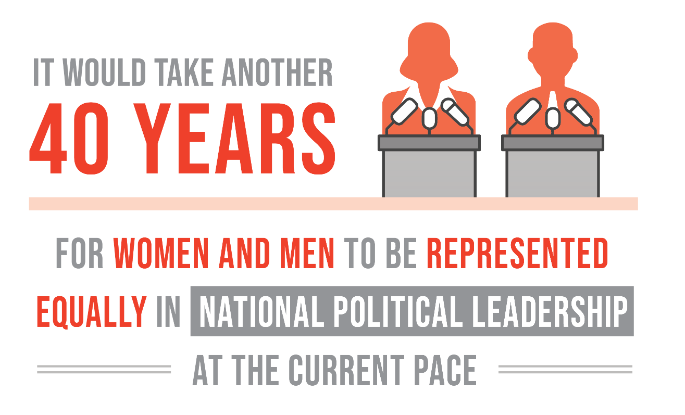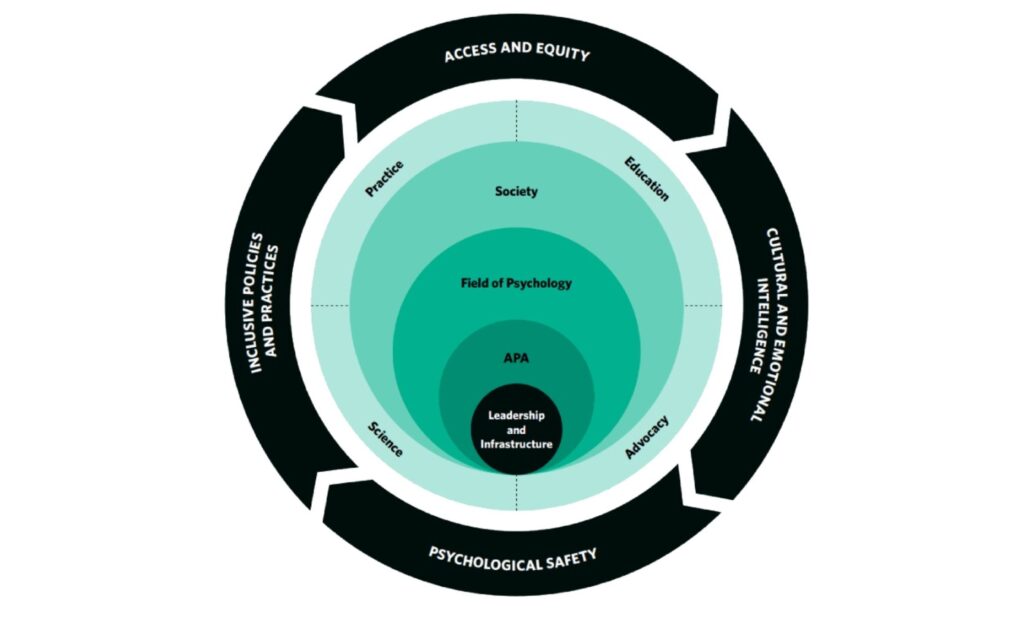Editorial and Concept Notes
“Developing and embedding inclusive policies and practices”
Executive Summary
Equity, Equality, diversity, and inclusion (EEDI) examines how to eliminate discrimination related to gender, age, disability, ethnicity, religion, physical, and other socio-economic background. The United Nations challenges the World to revisit the traditional approach to EDI and focus on the changes needed to create a diverse and inclusive environment founded on the need to ask questions, to challenge, to seek solutions, to look for evidence of change, and to measure EDI indicators. New studies are required to examine the historical and current EDI policies and practices. New studies should focus on “What works, which policies and practices have proven effective, or less effective, and why?” The findings will be relevant in shaping EDI strategy, interventions and sharing of good practices.
Keywords:
Equity, Equality, diversity, and inclusion (EEDI); One Community; Social Development; Quality and Inclusive Education.
Statement of the problem:
Inequality, inequity, disadvantage, lack of diversity, and exclusion have been highlighted as major socio-economic indicators preventing development progress in many developing economies. EDI offers a platform for critical and rigorous exploration of equal opportunities concerns including gender, ethnicity, class, disability, age, sexual orientation, religion, as well as other nascent forms of inequalities in the context of society, institutions, classrooms, campuses, etc. In this context, this proposal, seeks to bridge across research, policies and practices allied with equal opportunities by establishing a dialogue and contributions from key stakeholders with a view to developing methodological, theoretical, applied and philosophical silos.
Background to the Context
As mission-driven institutions, universities are expected to apply the best available psychological science to benefit society and improve lives by recognizing that the inclusion of diverse people (Ferdman, 2014; Williams, 2013). Equity, Equality, Diversity and Inclusion (EEDI) framework comprises of diversity of leadership and infrastructure; access, equity, and success; organizational climate; and core work of the institution. Diversity in the workplace means employing people of different ages, genders, ethnicities, sexual orientations, cultural backgrounds, and education levels (Stahl, 2021). The literature emphasizes on workplace diversity (both its characteristics and composition) (Mohammadi et al., 2022). According to study by Stahl (2021), diversity is crucial for creativity and social justice, and research shows that companies with a diverse workforce are 35% more likely to experience greater financial returns than their respective non-diverse counterparts. Also, workplace diversity boost creativity and innovation; creates greater opportunities for professional growth; and diverse teams are better at making decisions 87% of the time over non-diverse teams (Stahl, 2021). New studies are required to examine the historical and current EDI policies and practices.
Equity, Equality, Diversity and Inclusion (EEDI) Model:
Equity and Sustainable Development Goals
Equity relates to retention and successful completion of studies at the university level (Wanti et al., 2022). Access and Equity encourages the protection of marginalized groups and groups that have been historically underrepresented in our society. Within the higher education system, this relevance is stressed by the United Nation – Sustainable Development Goals (SDGs). SDG 4 “Quality Education”, target (4.3) promotes equal access for all to affordable and quality technical, vocational, and tertiary education, including university (Wanti et al., 2022). SDG 5 focus on achieving gender equality and empowerment of all women and girls. According to the World Bank (2014), there is significant problem concerning inaccessibility to higher education, which is primarily determined by geographical location, gender, rurality, and ethnic or linguistic status. The problem of exclusion go contrary to achievement of SDG 4, which advocate equal access by gender to all forms of higher education and to eliminate disparities and ensure equal access to all levels of education and vocational training for the vulnerable, including persons with disabilities, indigenous people, and children in vulnerable situations (Wanti et al., 2022). SDGs 4 and 5 has implications towards achievement of SDG 16 concerning the promotion of peaceful and inclusive societies, providing access to justice for all and building effective, accountable and inclusive institutions at all levels.
Inclusive policies and practices
Cultural and emotional intelligence defines the capability to provide education and training that is culturally responsive, adaptable, relatable, and provided with cultural and social humility and competence. While access and equity explains commitment to diversity, social justice, and equity, psychological safety denotes environment that foster the full inclusion and safe engagement of people of all social identities and social identities (American Psychological Association, 2021). Inclusive policies and practices is concerned with fairness. Being inclusive refer to policies that enable all learners irrespective of their background or demographic characteristics be given an equal opportunity to succeed. Difficulties such as misunderstanding, communication, or cultural gaps undoubtedly exist within (student) diversity interaction (Dan & Mino, 2016). Hence, inclusion policies are required to strengthen the capacity of an education system to reach out to all learners in the community (Wanti et al., 2022).
Figure 1. Underrepresentation of women in Political leadership

Source: https://sdgs.un.org/goals/goal5
A focus on gender equality and women’s empowerment will help address exclusion and underrepresentation of women in political and leadership positions of many sectors. It has been proven that sustainable and effective inclusive cultural change will only come about through institutions focusing simultaneously on both institutional and individual factors (see, AdvanceHE, 2010 report). The report note that to ensure the consistent uptake of inclusive practice across the institution, it is necessary to modify institutional policy and processes.
Conceptual and Theoretical framework
Previous studies applied EDI framework reflecting on equity, diversity, and inclusion derived from the field of psychology and broader society (Shorter-Gooden, 2014). Smith, 2009). For instance, American Psychological Association EDI framework falls into the following broad categories:
- leadership and infrastructure
- access and equity
- cultural and emotional intelligence
- psychological safety
- Inclusive policies and practices
Figure 2. Equity, Diversity, and Inclusion Model

Source: Akbar and Parker (2021). American Psychological Association (APA)
According to American Psychological Association (2021) Leadership and infrastructure denotes the vital importance of a leadership structure for EDI and an organizational infrastructure that supports the work. Inclusive policies and practices represent the creation and implementation of inclusive policies, procedures, and practices within the organization. It is essential to build an evidence base from which to bring about change. Finally, a multi-method, tailored approach is necessary involving different stakeholder groups and functions across the institution (AdvanceHE, 2010). New studies are required to examine What works, which policies and practices have proven effective, or less effective, and why? The findings will be useful designing EEDI strategy, interventions and sharing of good practices.
Editorial by:
Igwe, P. A. (2023). “Developing and embedding inclusive policies and practices”, Project Lead: Women in Higher Education Leadership (WIHEL), part of British Council – Gender Equality Partnership Programme with University of Lincoln, UK, ADIRM and CVCNU.
References
AdvanceHE (2010). Developing and embedding inclusive policy and practice in higher education. https://s3.eu-west-2.amazonaws.com/
Akbar, M. and Parker, T. L. (2021). American Psychological Association. https://www.apa.org/about/apa/equity-diversity-inclusion/framework
Dan, N. L, and Mino, T. (2016). Student diversity augments studying sustainability in higher education. Journal of Education for Sustainable Development, 10(1): 38–53.
Ferdman, B. M. (2014). The practice of inclusion in diverse organizations: Toward a systemic and inclusive framework. In B. M. Ferdman & B. R. Deane (Eds.), Diversity at work: The practice of inclusion (pp. 3–54). Jossey-Bass.
Mohammadi, Z., Bhati, A. and Ng, E. (2022). 20 years of workplace diversity research in hospitality and tourism: a bibliometric analysis. Equality, Diversity and Inclusion, Vol. ahead-of-print No. ahead-of-print. https://doi.org/10.1108/EDI-02-2022-0046
Shorter-Gooden, K. (2014). Creating diverse and inclusive colleges and universities. In B. Ferdman & B. Deane (Eds.), Diversity at work: The practice of inclusion, (pp. 451–481). Jossey-Bass.
Smith, D. G. (2009). Diversity’s promise for higher education. Johns Hopkins Press.
Stahl, A. (2021). 3 Benefits Of Diversity In The Workplace. Forbes. https://www.forbes.com/sites/ashleystahl/2021/12/17/3-benefits-of-diversity-in-the-workplace/
Wanti, M., Wesselink, R., Biemans, H., and Brok, P. den. (2022). Determining factors of access and equity in higher education: A systematic review. Equity in Education & Society, 1(2), 279–296. https://doi.org/10.1177/27526461221092429
Williams, D. A. (2013). Strategic diversity leadership: Activating change and transformation in higher education. Stylus.
World Bank (2014). Policy Brief: Equity, Access, and Success in Higher Education. Jakarta, Indonesia: Human Development Sector. Available at: http://documents.worldbank.org

Bridging the gap in participation of women in Senior Management positions in the Nigerian Higher Education.

